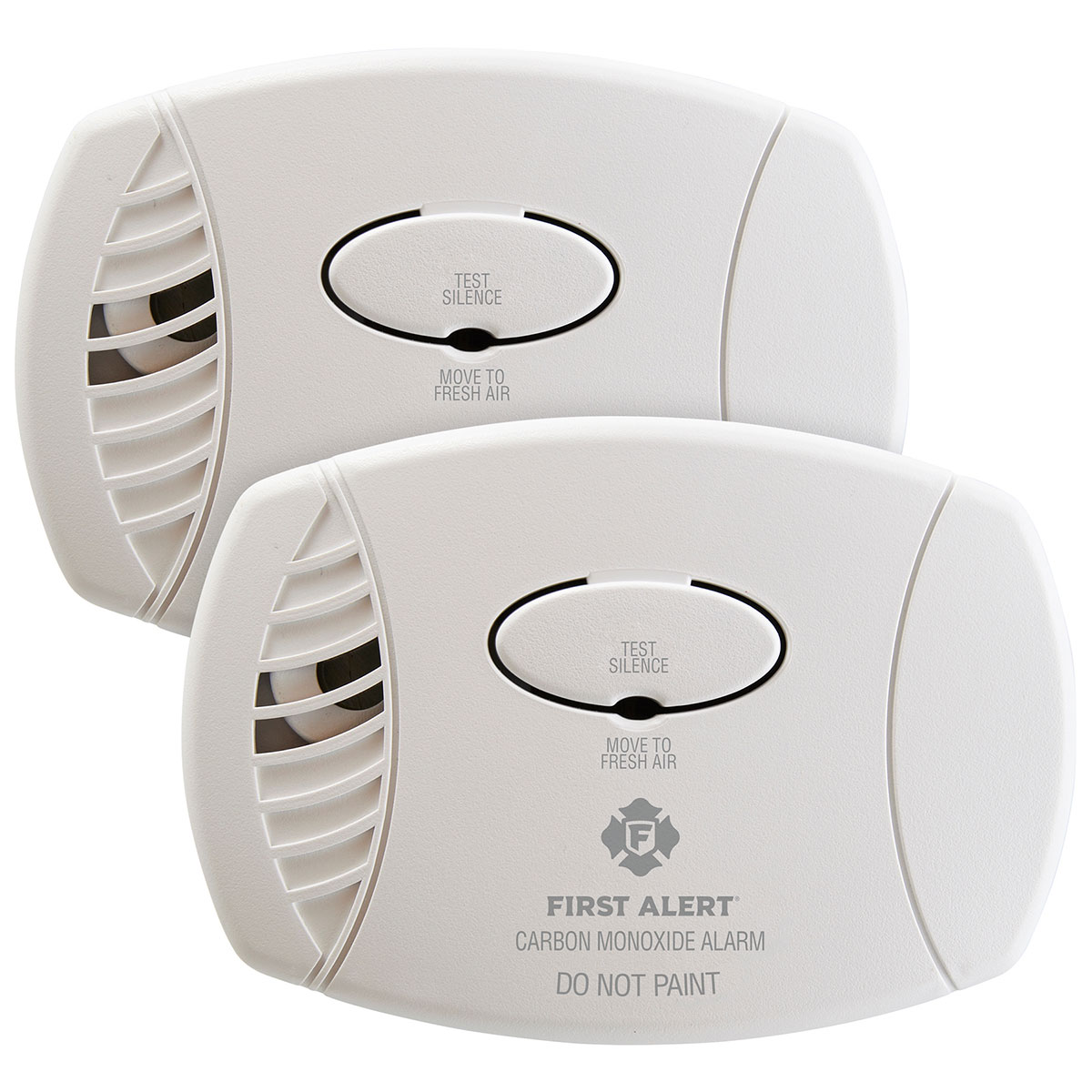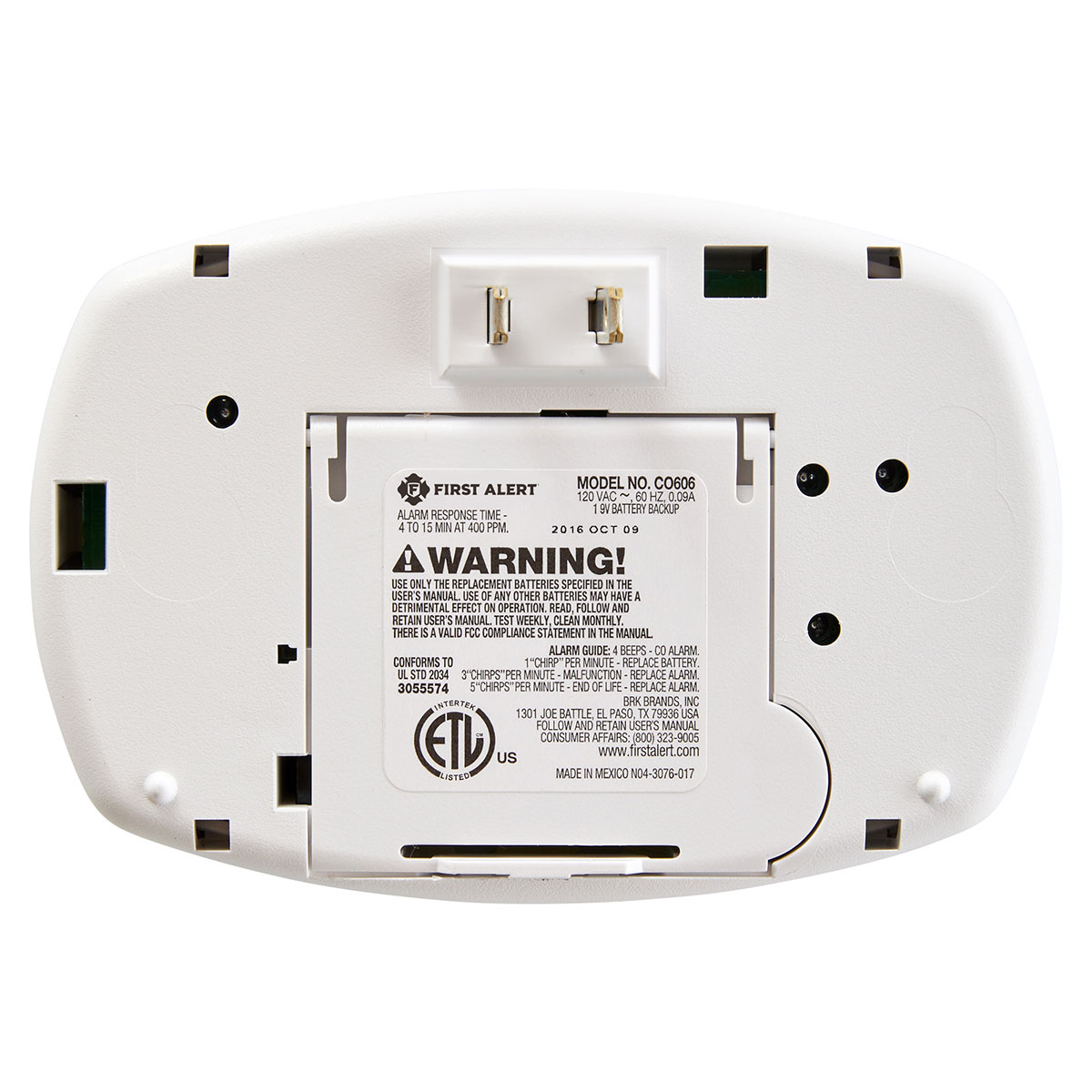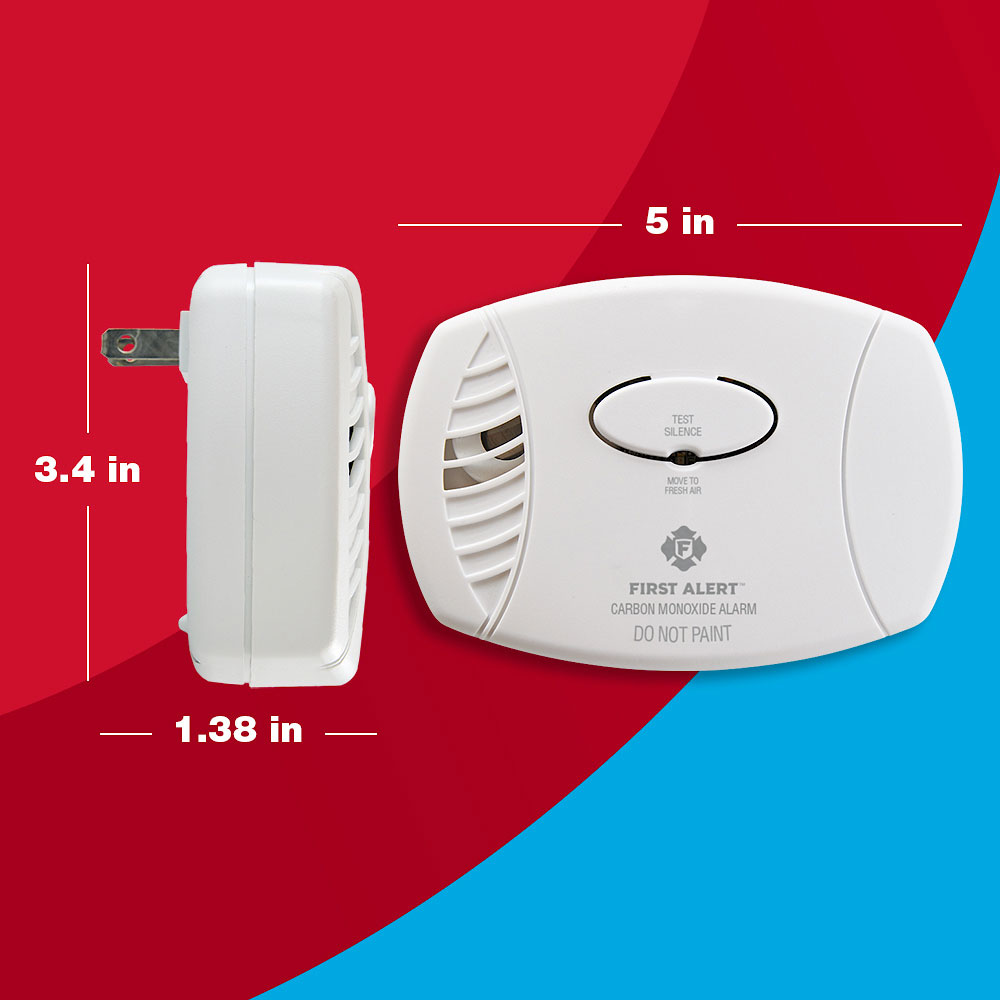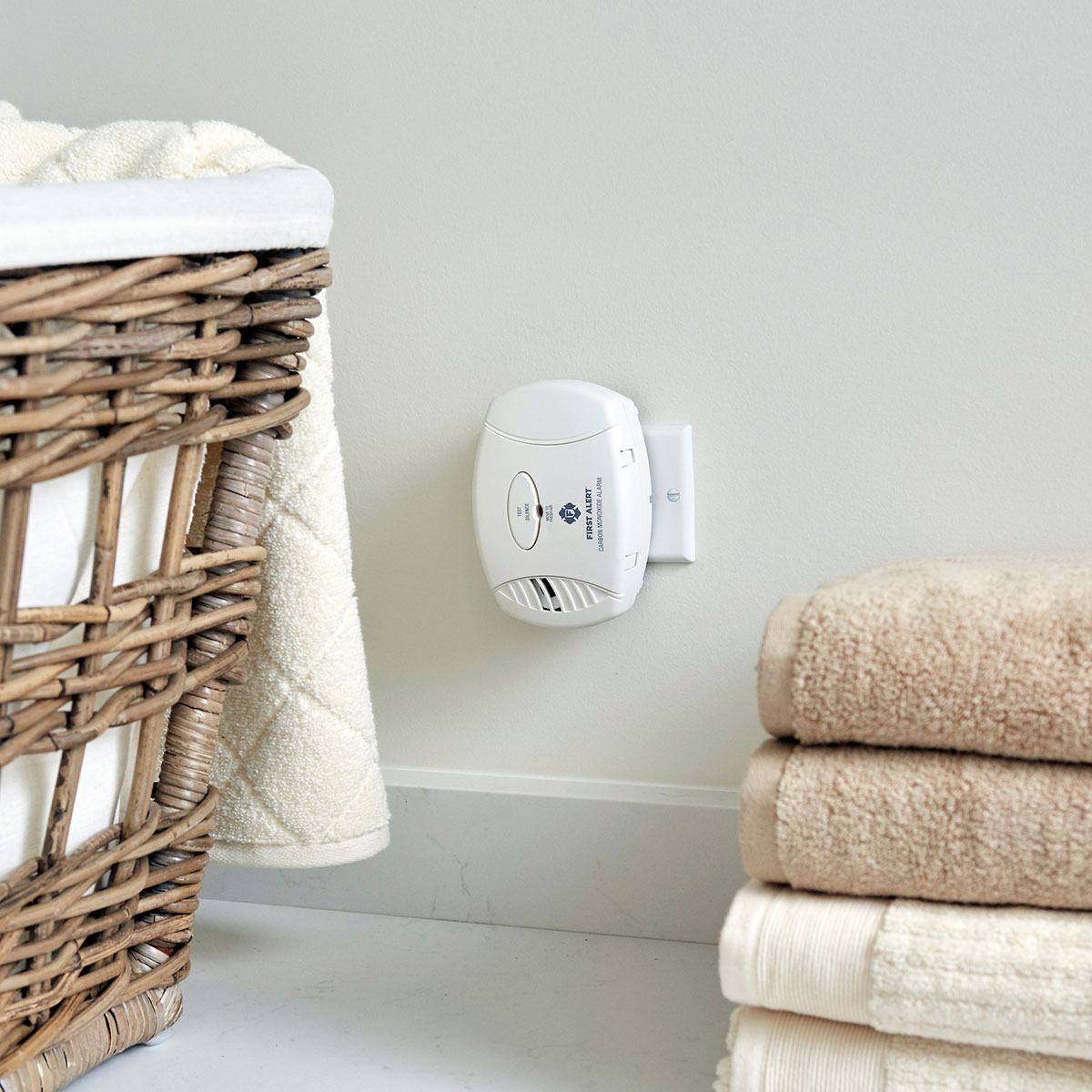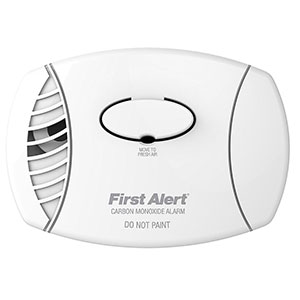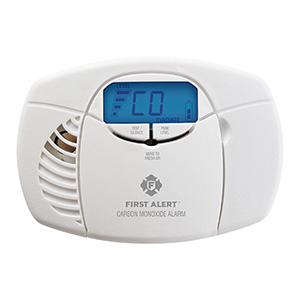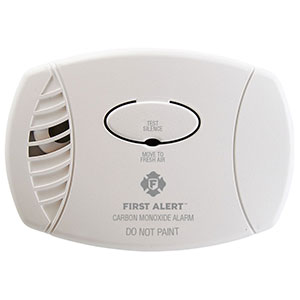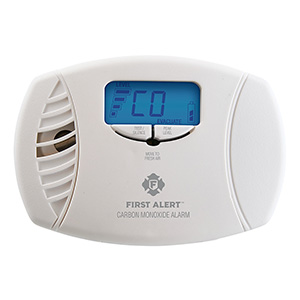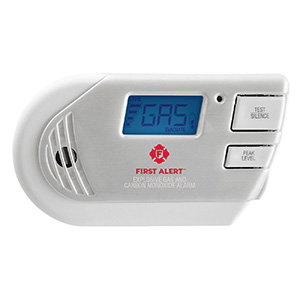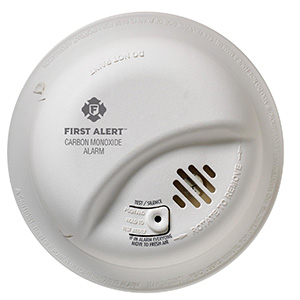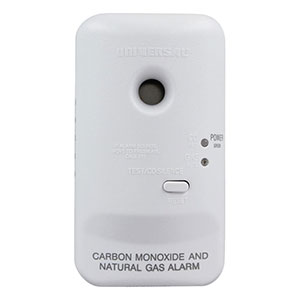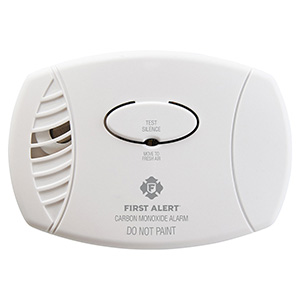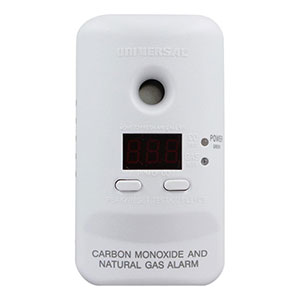Plug-In Carbon Monoxide Alarm with Battery Backup
This bundle includes TWO(2) CO605 CO Alarms
The First Alert CO605 Carbon Monoxide Plug-In Alarm features an electrochemical CO sensor to alert you to dangerous carbon monoxide. This personal carbon monoxide detector plugs into any standard electrical socket to monitor CO levels in your home, office, or other space. The simple, user-friendly design features battery backup to allow for continuous monitoring, even in the event of a power outage.
Dual Power Provides Continuous Monitoring
The carbon monoxide detector can be placed almost anywhere; all it requires is a standard electrical outlet. In the event of a power failure, backup batteries power the CO detector so it can continue monitoring your space for dangerous levels of carbon monoxide.
Electrochemical CO Sensor
The First Alert Carbon Monoxide Plug-In Alarm uses an electrochemical sensor to alert you to elevated carbon monoxide levels. Designed to alert the soundest of sleepers, a loud 85-decibel alarm warns you when carbon monoxide is detected.
Simple and Easy to Use
The carbon monoxide monitor is easy to set up: simply plug it into a standard electrical outlet to monitor your space for carbon monoxide. There are no complicated displays or settings to navigate; a single button silences the alarm and tests the CO detector.
Where To Place Carbon Monoxide Alarms: One on every level of the home and one in each sleeping area.
First Alert Carbon Monoxide Alarm CO605
*This item is not eligible for any further discounts.
Can I unplug the carbon monoxide alarm to silence or reset it, or do I need to leave it plugged in?
Do not unplug your alarm! A First Alert plug-in carbon monoxide alarm will only reset when it is receiving electricity. Press and hold the Test/Silence button for 5 seconds to quiet a plug-in alarm while ventilating. You may have to do this numerous times to give the alarm time to reset.
Can I unplug the carbon monoxide alarm to silence or reset it, or do I need to leave it plugged in?
Do not unplug your alarm! A First Alert plug-in carbon monoxide alarm will only reset when it is receiving electricity. Press and hold the Test/Silence button for 5 seconds to quiet a plug-in alarm while ventilating. You may have to do this numerous times to give the alarm time to reset.
How do I get my carbon monoxide alarm to stop chirping?
If your carbon monoxide alarm keeps chirping, the battery may be low or weak. On First Alert carbon monoxide detectors, check to see if the battery light is yellow or green. If the alarm is chirping and the light is yellow, it means the battery is low. The way to get a carbon monoxide alarm to stop chirping is to replace the battery.
Should I leave my carbon monoxide (CO) alarm plugged in all year?
Leave your carbon monoxide alarm plugged in all year. Carbon monoxide gas problems can happen at any time. Remember, your furnace or space heaters aren't the only source of carbon monoxide. Gas ranges, water heaters, dryers, charcoal grills, or vehicles left running in an attached garage can all cause carbon monoxide gas problems.
Why is the green power light flashing on my First Alert plug-in carbon monoxide alarm?
With all First Alert plug-in carbon monoxide alarms, any time there is a power outage, brownout, surge or other problem with the power, the alarm goes through a power up cycle. The flashing on your plug-in carbon monoxide alarm should stop after 5 minutes, then the light will stay a steady green.
Where should I install carbon monoxide alarms? What is proper carbon monoxide alarm placement?
It is very important to install carbon monoxide alarms near or in each separate sleeping area. Many states now require that a carbon monoxide alarm is placed in each bedroom. For added protection, placement of an additional carbon monoxide alarm at least 15-20 feet away from the furnace or fuel burning heat sources is recommended. Also, install carbon monoxide alarms at least 10 feet from sources of humidity like bathrooms and showers. In two story houses, install one carbon monoxide alarm on each level of the home. If you have a basement, carbon monoxide alarm placement is recommended at the top of the basement stairs.
Is there anywhere I shouldn't install carbon monoxide alarms?
Do not install carbon monoxide alarms in garages, kitchens, furnace rooms, or in any extremely dusty, dirty, humid, or greasy areas. Do not install alarms in direct sunlight, or areas subjected to temperature extremes. These include unconditioned crawl spaces, unfinished attics, un-insulated or poorly insulated ceilings, and porches. Carbon monoxide alarms should not be installed in outlets covered by curtains or other obstructions. Do not install in turbulent air-near ceiling fans, heat vents, air conditioners, fresh air returns, or open windows. Blowing air may prevent carbon monoxide from reaching the CO sensors.
How many carbon monoxide alarms should I have in my home?
So how many carbon monoxide alarms should you have in your home? The National Fire Protection Association (NFPA) recommends that you should have a carbon monoxide alarm centrally located outside of each separate sleeping area in the immediate vicinity of the bedroom. For added protection, you should have additional carbon monoxide alarms in each separate bedroom and on every level of your house, including the basement. Some states now require that you have a carbon monoxide alarm in each bedroom of the house. If you install only one carbon monoxide alarm in your home, place it near or in your bedroom.
What is the proper way to do a carbon monoxide alarm test?
The following procedure is the proper way to do a carbon monoxide alarm test - Press and hold the Test Button on the front of the alarm until the alarm sounds. Be sure you hold the button down long enough; it can take up to 20 seconds for the alarm to respond to the test.
Is it a false alarm when my carbon monoxide alarm sounds and there doesn't seem to be a problem?
A carbon monoxide alarm false alarm should not occur if your alarm is in working order. Remember, carbon monoxide is an odorless, colorless gas. If your carbon monoxide alarm went off, it detected potentially harmful amounts of carbon monoxide. After the professionals have evaluated the situation, make sure no one has any symptoms of carbon monoxide poisoning.
Here are a few situations that may cause a carbon monoxide alarm "false alarm:"
-
The carbon monoxide alarm needs to be relocated. Carbon monoxide alarms should be located 15-20 feet away from all fossil fuel burning sources like furnaces and stoves. Alarms should be located 10 feet away from sources of humidity like showers.
-
Fossil fuel burning appliances may not be burning fuel completely. Check pilot lights/flames for blue color. Appearance of yellow or orange flames indicates incomplete combustion-a source of carbon monoxide.
Will carbon monoxide alarms detect explosive gas leaks?
No, a single function carbon monoxide alarm reacts to carbon monoxide only. To detect explosive gas, you need an explosive gas detector. Different kinds of explosive gas can be detected and it is recommended that any home that utilizes natural or propane gas have at least one explosive gas leak detector.





